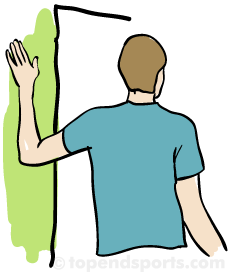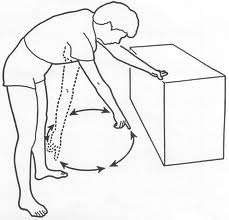The shoulder is one of the most elaborate joints in the human body. Proper function of the shoulder is fully dependent on a combination of sufficient strength, stability and mobility. The shoulder is the most mobile joint in the body, which also makes it one of the most vulnerable. Although some shoulder injuries are acute or single event traumas (occur quickly; think falling or being hit) most shoulder complaints are chronic and multi dimensional due to the array of bones, ligaments and muscles that are critical for function.
The following program is designed to improve shoulder function, reduce pain and prevent future injuries. Every individual is different and will respond in various ways to the exercises. Time and diligence are essential when it comes to shoulder rehabilitation. I would highly recommend seeing your chiropractor (if he/she preforms extremity adjustments), an athletic therapist or a physiotherapist for more specific rehabilitation.
Step 1: Warm Up. Spend 5-10 minutes warming up your body with light, low impact activity. Walking or biking are great options. Simply moving gets the body warmed up and ready for more focused work.
Step 2: Stretch. More often than not, lack of mobility in the shoulder is a major offender. Therefore, stretching out the muscles that are too tight is imperative to improving shoulder function. Properly moving joints and muscles allows nerves to “breathe” and results in decreased pain and symptoms.The following stretches should be done 5 to 6 days per week and held for 5 deep breaths. Stretch to the point where it "hurts so good" not to the point where it feels "wrong".
If you are unable to touch your fingers behind your back, grab a towel and hold on to each end, inching as close as possible.
Step 3: Strengthening. After proper mobility is obtained and shoulder is symptom free, strengthening components can be added. These exercises should be determined on an individual bases. Find a trainer, chiropractor, physiotherapist or athletic trainer to determine what is best for you.
Additional Options:
Ice
Place an ice pack or frozen peas on the area of pain for 10-15 minutes up to three times per day with at least two hours between sessions. If heat feels better, feel free to use it, but for no longer than 30 minutes per session. Icing after a stretching or strengthening session will help to reduce inflammation that may occur.
Supplements to Consider (All can be purchased at Lifemark Nature Park Way)
Best Rest Formula: This supplement not only helps you achieve a better sleep, but also aids in relaxing your muscles. Take 2 capsules up to an hour before bed.
Ligament Restore: A combination of ingredients found naturally in your ligaments, tendons and joints can be found in this supplement aiding in natural repair and maintenance of your connective tissues. It also contains anti-inflammatory compounds like curcumin and glucosamine for ligament strength.
Omega-3 (Fish Oils): Our omega 3 fish oil is naturally derived with no artificial chemical concentration. It’s a pharmaceutical grade supplement from cold water fish resulting in a very pure and high quality product. It’s a natural anti inflammatory supplement leading to less pain, less inflammation and increases brain and cellular function.








Comments